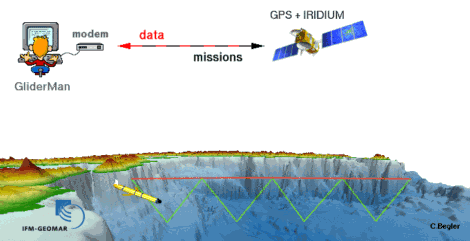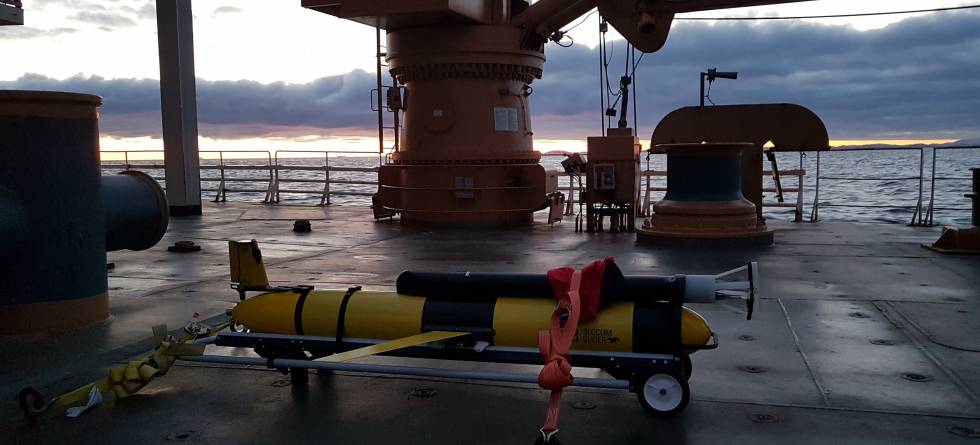Written by Kjetil Våge and Stefanie Semper, onboard the US coast guard cutter Healy
It is an early Sunday morning in Baffin Bay, well before sunrise. The underwater glider Odin is on the aft deck of the US coast guard cutter Healy, being remotely checked by the onshore team in Bergen.
These are the final tests. All sensors are mounted, the communication works well, and the glider is ready to go.
Perfect conditions for glider deployment
Shortly after breakfast, Healy's crew cranes the vehicle over the beam of the ship. Greenland's mountains are visible in the distance, the sea is calm, there's no wind. These are perfect conditions for a glider deployment. Slowly, steadily, Odin is lowered toward the sea. From just above the surface, Odin is released into the cold water.
Finally, the glider is in its right element!
While the Healy steams away, Odin begins diving, moving vertically through the ocean by changing its buoyancy relative to that of the surrounding seawater. Odin's wings convert the vertical motion into horizontal displacement, and a rudder enables steering.
While flying through the ocean, instruments mounted on the glider measure the ocean's temperature and salinity. Whenever Odin reaches the surface, it transmits data to Bergen via satellite. In return, the glider receives instructions for the next dive.
Odin's mission is to map the properties and pathways of warm Gulf Stream-origin water flowing toward some of the most active outlet glaciers in Greenland. The warm water melts these glaciers from below. As temperatures increase in a warming climate, warmer waters reaching the outlet glaciers accelerate the mass loss from the Greenland ice sheet.

One of six
The glider’s measurements complement the faster and more extensive survey conducted by the Healy. Together, these data sets will enhance our understanding of how the ocean melts Greenland in Baffin Bay.
Odin is one of six gliders currently deployed on active duty across the Nordic Seas and Baffin Bay as part of the NorGlider fleet in Bergen. The pilots watch over the fleet in shifts, ensuring that the gliders return valuable data and receive new instructions.
Controlled from Bergen, Odin continues to measure the flow of warm water toward the outlet glaciers. While the Healy has completed its science mission and speeds toward port, Odin will keep dodging the numerous ice bergs and smaller bergy bits called growlers that emanate from the glaciers.
Odin's mission does not end until late October, when it is recovered by the Canadian coast guard ship Amundsen - just before sea ice starts forming in this part of Baffin Bay.

